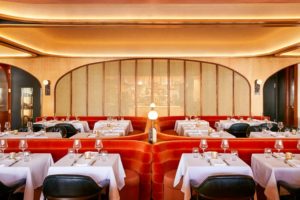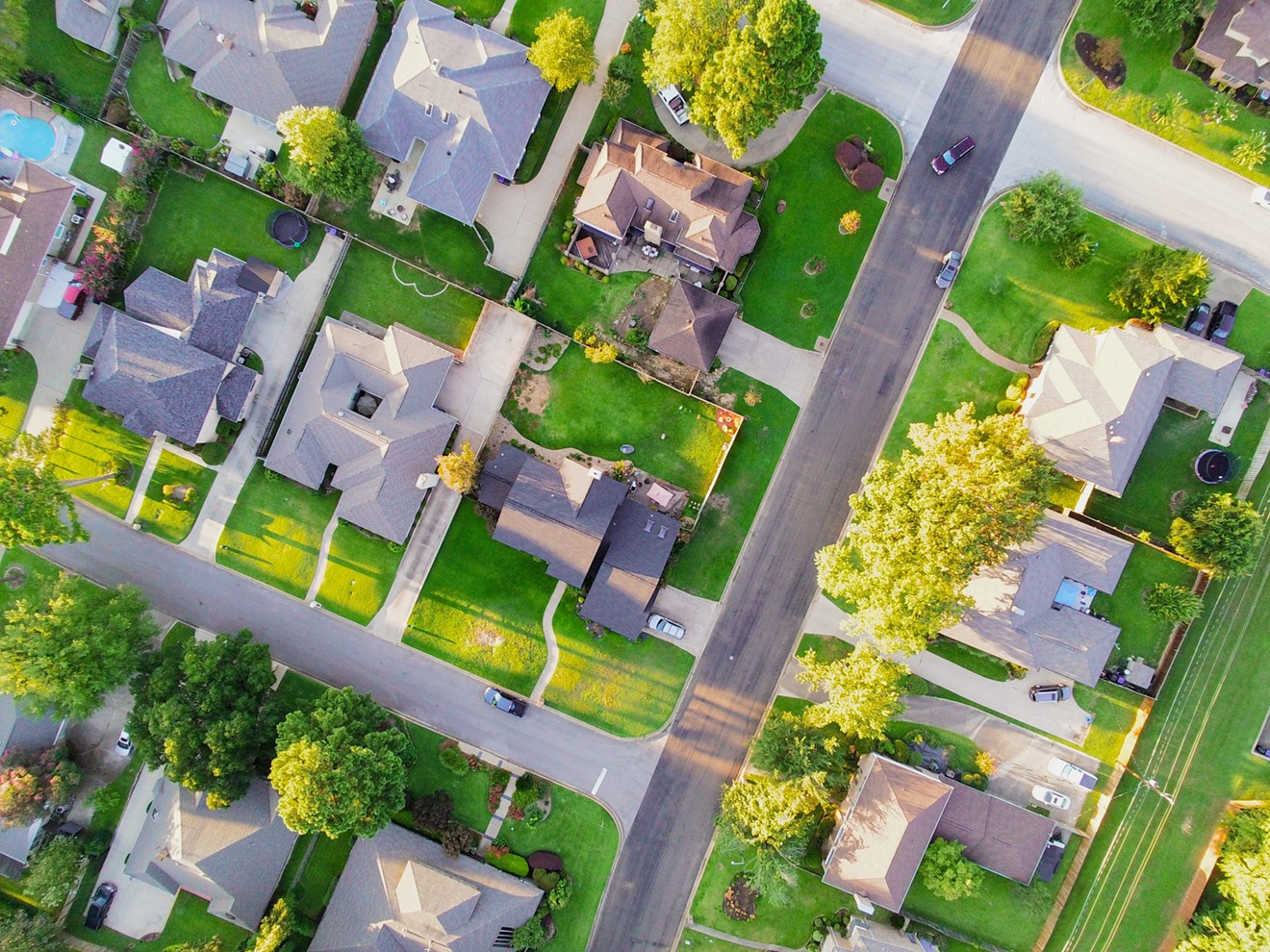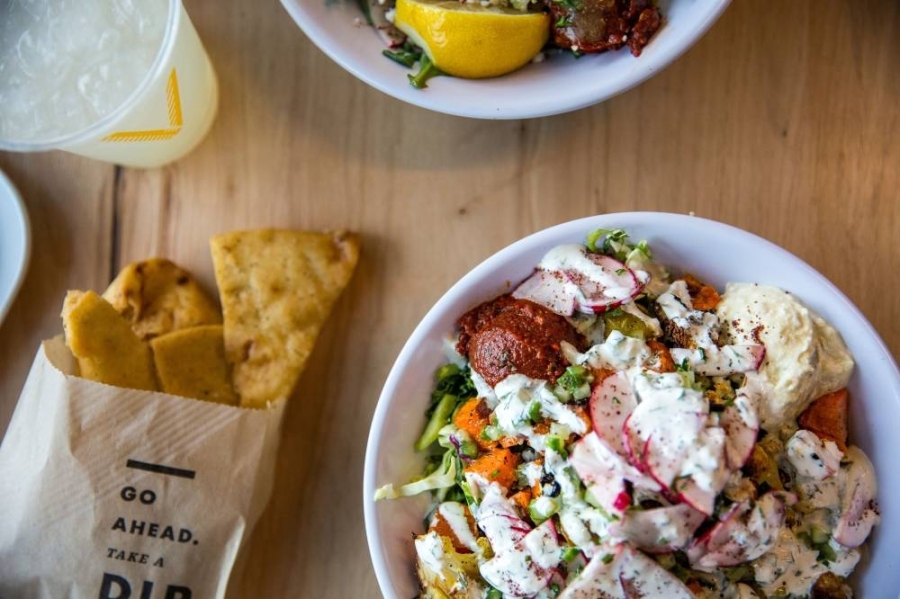 You can sense the excitement in the Dallas restaurant industry: Patio weather is here, thousands of people are getting vaccinated every day and dining rooms are beginning to welcome back customers who’ve previously stuck to takeout.
You can sense the excitement in the Dallas restaurant industry: Patio weather is here, thousands of people are getting vaccinated every day and dining rooms are beginning to welcome back customers who’ve previously stuck to takeout.
The excitement isn’t limited to current restaurants. In 2021, we’re poised to see a boom of new openings, and many of them are going to be very expensive.
Tasting menus are in again. At Monarch, in downtown’s National Building, diners can choose to sign up for a $290 tasting of “the best our menu has to offer.” On Greenville Avenue, two new tasting spots will debut this summer: Shoyo from longtime Nobu sushi chef Jimmy Park and Carte Blanche by married chefs Amy and Casey La Rue. Casey has worked for
If you want to order a la carte, there will still be plenty of lavish options. Monarch has five steaks clocking in at $100 or more. Meridian, set to open soon in the Village development, will be a showcase for the life story of Brazilian-American chef Junior Borges, who’s worked locally at high-end landmarks FT33 and Uchi. Carbone, a swanky Italian-American spot from New York City, is opening a Dallas location just months after another New York import, Eataly, which serves both groceries and $12 cups of gelato made from scratch after you’ve ordered them.
Just one floor up the National Building from Monarch, new sushi restaurant Kessaku serves a $21 spicy tuna roll and a $175 cocktail with ultra-rare Japanese whiskey. A few blocks away, The Exchange has begun serving two menus in a communal space, one an upscale (but not exorbitant) bistro, the other a Japanese spot with a $10 cup of miso soup.
A new restaurant in Deep Ellum, Harper’s, recruited the former chef from Wolfgang Puck’s revolving Reunion Tower restaurant to create a menu that, The Dallas Morning News reports, will embody “approachable opulence.” Oh, and there’s also a guy who throws salt at a $1,000 steak.
I could keep going. What gives? For Dallasites who have spent the last year struggling to pay bills, this sudden explosion of expensive eating may add insult to injury. It certainly is a stark reminder that during the pandemic, the rich only got richer.
But the main cause for this sudden infusion of big money is simpler and more mundane. Most of these plans have been in the works for years. They were conceived before the pandemic when Dallas food was experiencing one of its all-time biggest booms.
The National, downtown, is the best example. The tower, built in 1964, is at the end of a multi-year remodeling program after the building fell vacant in 2010, and its four restaurants, including high-dollar Monarch and Kessaku, are part of that long-term project. The La Rues have been booking tastings locally since they moved to Texas in 2019. Meridian and Eataly were announced before the pandemic, and Nusr-Et’s gold-wrapped rib-eyes have been in development since 2017.
Eager to set some kind of record, Dallas investor Stephen Summers reportedly spent over eight years working to open our location of the New York Italian spot Carbone. A New York Times review suggests that the restaurant’s $18 cheesecake slice could be “the best you’ll ever have in your life.”
Put simply, it takes a long time to open a restaurant, especially a fancy one that involves construction costs or extensive redecorating. The process of finding a location and signing a lease can be painful even before an owner starts hiring chefs or buying plates. According to court filings, Circo TX, the notorious nine-month restaurant in Uptown Dallas, owed around $1 million in back payments on rent before it even opened.
So if you’re feeling personally attacked by all these new high-dollar foods, remember what the Dallas food scene looked like before the pandemic. We were experiencing a year of incredible growth and creativity. A lot of that was focused on small, affordable neighborhood restaurants, but there were indulgences, too. Fachini introduced us to 100-layer lasagna, Georgie brought us a $400 steak, Drake’s created a $14 side order of curly fries and we had luxurious tasting nights on offer at Petra and the Beast, Fauna and Revolver Taco Lounge.
In other words, what’s old is new again.
I am mostly encouraged by all of this new activity. The Dallas food scene looks like it’s picking up the pieces and moving forward. That’s true of both fine-dining places and more affordable newcomers like Encina, the upcoming Roots Southern Kitchen and dozens of new openings in the suburbs representing a variety of global cultures, like Apsara in Grand Prairie, Adda in Richardson and Pita Town in Plano.
Maybe, after a year of pandemic closures and pain, restaurants are ready to pick up where they left off. A lot of the new activity comes with huge price tags, but what did you expect? We’re still in Dallas.
I’ll be happy to support restaurant workers and owners in their new endeavors if I can afford them. Remember, many of these high-dollar joints will deliver seriously good meals. The real solution to this roller coaster of cost is not to lash out against the food industry, but to support political change that will reduce income inequality across the country and make it possible for more people to eat those $18 slices of cake.
In the meantime, if you want to redistribute some wealth, I recommend you open a restaurant.




0 Comments